Creators Wanted Gets Big Results
With a skills gap and misperceptions about modern manufacturing threatening to leave millions of manufacturing jobs unfilled by 2030, Creators Wanted, a campaign by the NAM and the Manufacturing Institute, stepped in. Now, it is seeing eye-popping results as it works to inspire 600,000 new manufacturers by 2025.
Connecting with communities: From July through November of this year, Creators Wanted continued to take its tour to communities across the country, offering potential manufacturers, career influencers and community leaders an exciting opportunity to learn about modern industry. Stops included Midland, Michigan; Nashville/White House, Tennessee; West Columbia, South Carolina; Decatur, Illinois; and Chicago, Illinois.
Promoting knowledge: These latest stops have bolstered the tour’s overall reach. As of this month, the tour has brought 7,900 students through its immersive experience and motivated 840,000 students and potential career mentors—including parents and educators—to sign up online to learn more about manufacturing careers.
- “Our propriety algorithm for directing our campaign’s content to potential future manufacturers continues to get even more effective as we engage more people,” said NAM Managing Vice President of Brand Strategy Chrys Kefalas.
- “We’ve added more than 500,000 people to our email network since only September, giving the industry a powerful tool to reengage important audiences in building the future workforce.”
Changing minds: Creators Wanted is focused on exposing students, parents and teachers to the reality of modern manufacturing to challenge outdated notions and encourage young people to see manufacturing as a potential career.
- Approximately 75%of people who have participated in the tour reported that they left the experience with a significantly improved view of modern manufacturing careers.
Getting the word out: In addition, Creators Wanted has generated approximately $5 million in positive earned media about the campaign and modern manufacturing careers—ensuring that people across the country gained greater awareness of the campaign’s resources and significant need for talent in manufacturing.
Building on progress: These results build on the sustained workforce solutions of the MI, the workforce development and education partner of the NAM, which runs programs geared toward women, veterans and underrepresented communities.
- The MI and Deloitte report that positive perception of manufacturing careers among parents has soared from 27% when the tour started to 40% today—closing in on the goal of 50% by 2025.
The road ahead: The campaign will soon deploy additional resources for job seekers and students at CreatorsWanted.org, in partnership with FactoryFix, the official recruiting partner of the campaign. Find out more about the Creators Wanted campaign here.
How Manufacturers Can Boost Their D&I Efforts
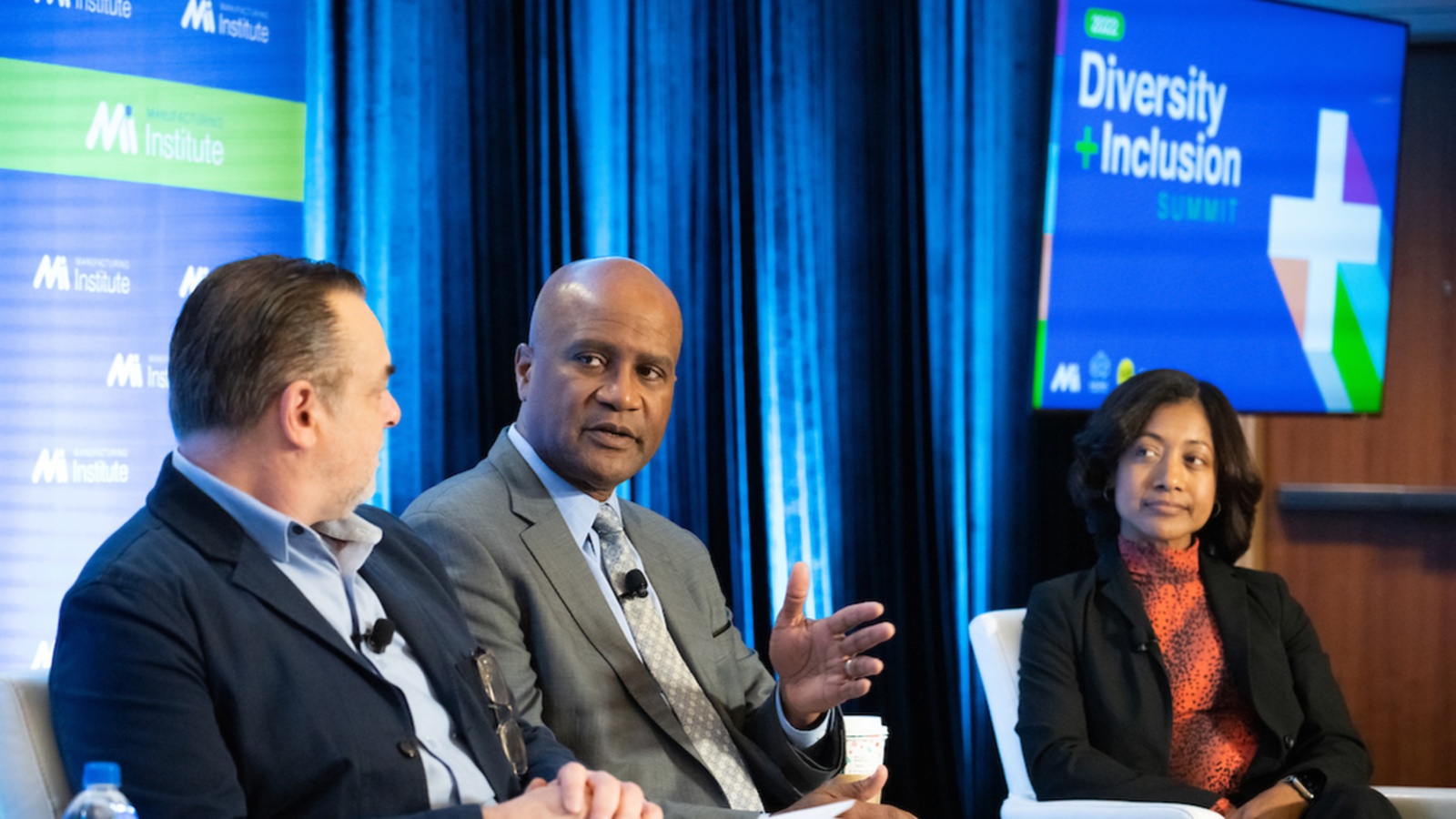
The manufacturing leaders who met in Washington, D.C., this month agreed wholeheartedly: D&I is integral to building and retaining the workforce of tomorrow.
At the third-annual Diversity+Inclusion Summit convened by the Manufacturing Institute, leaders gathered to share data, insights and lessons gleaned from their own D&I efforts. Hailing from many different industry sectors and companies of all sizes, the panelists and attendees laid out concrete actions that can transform companies’ D&I objectives.
Why it matters: With 2.1 million jobs expected to go unfilled in the industry by 2030, manufacturers need to find new populations of potential employees. Recruiting more women, racial and ethnic minorities and neurodiverse workers can expand companies’ talent pools and strengthen their workforces.
- In fact, increasing the current female workforce from 29% to 35% would fill the industry’s 746,000 open jobs all on its own, according to a recent study by the MI and Colonial Life.
- That’s why the MI is working to meet this target through its 35 x 30 Campaign—i.e., increasing the percentage of women in manufacturing to 35% by 2030.
How to do it: The summit offered important tips to help companies boost their D&I efforts, including:
- Get buy-in from company leaders: Research shows that D&I efforts lead to greater productivity, increased innovation and higher revenue—not to mention the recruitment and retention benefits. Once companies set D&I goals, leaders should incorporate D&I objectives into their annual goals to create opportunities for accountability.
- Use employee resource groups in a structured way: Companies should set up organizational structures for their ERGs that will ensure longevity and encourage fresh thinking, as well as align with companies’ overall D&I goals. These groups should have their own budgets and rotating leadership positions. When possible, the contributions of ERG leaders should be included in their incentive programs or annual goals.
- Educate your first-line supervisors about D&I: By training first-line supervisors on the latest in D&I and company-specific objectives, companies can help them both support their teams better and collect feedback to inform the overall effort.
- Offer child care and flexibility: In the post-pandemic environment, companies are still exploring what works best for them, but one thing is clear: to recruit and retain talent in a tight labor market, companies need to provide employees with options. (Check out our recent webinar on the same subject.)
Learn more: Interested in joining the conversation? Check out the MI’s D&I tools and resources, and register for upcoming events, including our upcoming Virtual Diversity+Inclusion Summit on Dec. 16, here. The virtual summit will include some recorded sessions from this event as well.
How Manufacturers Can Leverage Adaptive Skills
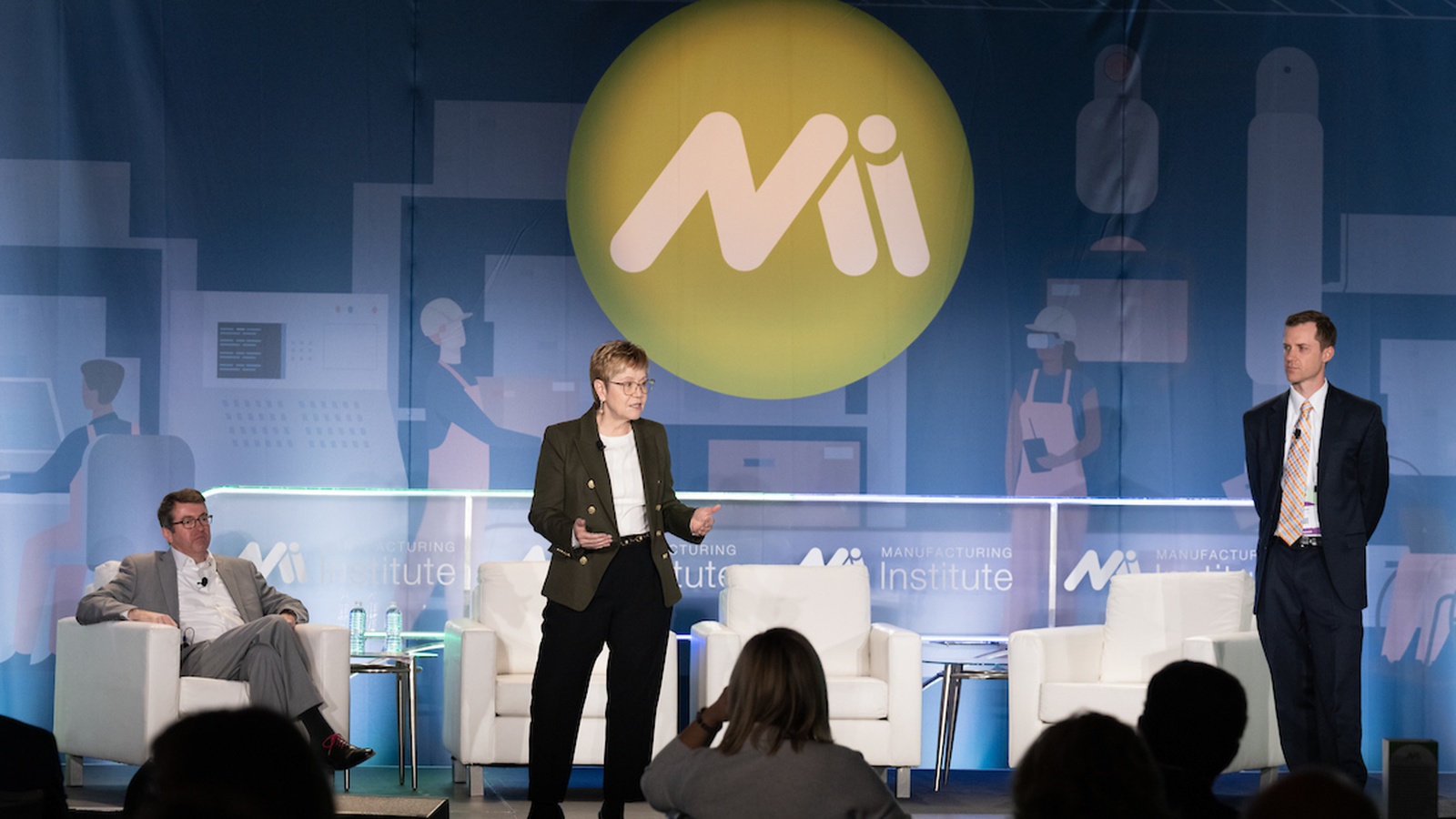
The skills gap is one of the biggest challenges facing manufacturers today—but what if there was a way to overcome it and fill jobs more effectively and easily? In fact, such a method exists, and it’s called “adaptive skills” development.
Timely topic: The Manufacturing Institute’s inaugural Workforce Summit in Cincinnati, Ohio, covered this topic last month, in a session led by two EY partners. Here’s what they had to say.
- “What are adaptive skills? It’s exactly as you would expect: they’re skills that help an individual learn and expand their capabilities to meet an ever-changing job function, business market [or] home environment,” EY Americas Business Consulting Leader Lisa Caldwell told the audience.
- Developing and leveraging these skills, which include communication and problem solving, helps companies retain a broader workforce, according to a recent joint EY–MI study that built on earlier research from EY and Oxford Said Business School, Caldwell said.
- This is particularly important today, as the U.S. workforce could have a shortage of 2.1 million manufacturing jobs by 2030 if the skills gap is not addressed, according to a joint Deloitte–MI study cited by Caldwell.
Manufacturing-specific skills: In their study, the EY and MI identified three specific adaptive skills “that were highly relevant to the manufacturing industry,” said EY People Advisory Services Partner Stephen Fuller during the session.
- Root-cause analysis: The ability “to understand what the root of a problem is, what the data needed to make a decision is,” as Fuller put it.
- Systems thinking: It’s “all about … asking questions. ‘Who does this? Where does this go? How does this work? When does XYZ occur?’”
- Creative reasoning: The key here is the ability to consider problems from unusual perspectives, said Fuller.
Lessons learned: Caldwell shared some of the major study takeaways that manufacturers can use.
- Create an adaptive culture: “[B]uild a culture that … empowers, a culture that wants collaboration, a culture that encourages and recognizes people who speak up, who bring forward ideas.”
- Parlay adaptive skills into new career paths: “If we build career paths and we define the skills and the capabilities that are needed for those career paths, focusing on adaptive skills as much as the technical skills, I think we have something that could really attract people to want to not only come but stay in manufacturing.”
- Invest in individualized learning: This can include rotating jobs, mentoring, shadowing programs and leveraging technology to create experiential learning for employees, said Caldwell.
- Add adaptive skills to your hiring strategy: “It’s really important that we have classroom training and virtual training that isn’t just slides up on a screen, but is very immersive for people and lets them actually feel and experience … what we’re trying to teach them.”
The last word: Ultimately, closing the skills gap “all starts with skills and infusing adaptive skills into your role profiles,” Fuller said. “[Use] it as a way to connect people to learning experiences that are meaningful for them. That’s ultimately the formula for success.”
Future Skills Needs Study: Quick Facts
The Center for Manufacturing Research at the MI recently released a study in partnership with Rockwell Automation and PTC forecasting the skills needs of the manufacturing sector over the next 5 to 10 years.
Here’s what the study found:
- There are 3 major skills needs for the future: data analytics, an agile mindset paired with problem-solving and critical thinking, and interpersonal skills.
- Manufacturers are interested in preparing for upcoming skills needs by connecting with the workforce of the future. (See how the MI is building this workforce with our groundbreaking initiative, Creators Wanted.)
- Manufacturers are intentionally recruiting and promoting segments of the population that have historically been excluded from manufacturing roles or leadership. (Learn how the MI is leading conversations about D&I here.)
- Focusing on corporate culture is a key component of building and maintaining a strong workforce.
- Nearly every company surveyed reported the importance of continuous training for their current worker, i.e. “upskilling”.
Read the full report here.
The Manufacturing Experience: Closing the Gender Gap
The Manufacturing Institute with support from Colonial Life released a new paper that explores what manufacturers are doing to help close the gender gap, incorporating survey responses and interviews with various company executives that identify key insights and practical advice for other manufacturers. To address the workforce shortage, manufacturers need to expand their talent pools, bringing in more diverse and underrepresented candidates.
Women represent a sizable talent pool that manufacturers cannot ignore, especially as the sector becomes more advanced. Earlier this year, the MI launched our 35×30 campaign, which aims to do just that—increase the percentage of women among manufacturers from 29%, where we hover now, to 35% by 2030 by changing perceptions among women and girls about manufacturing as a career, attracting and retaining more female employees.
Read the full report here.
NAM Retirement Plans Offer Security for Manufacturers
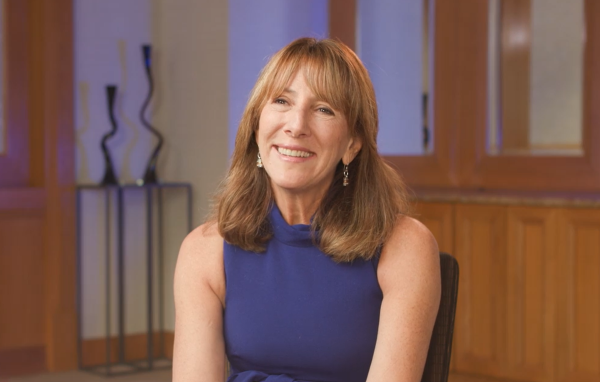
At a time when attracting and retaining talented employees is more important than ever, offering a retirement plan can make a critical difference. But for manufacturers like Winton Machine Company, a tube and coax fabrication manufacturer based in Suwanee, Georgia, the cost of a plan can create a real challenge.
- “It’s really difficult as a small manufacturer, because you’re competing against benefit packages that are given by large companies,” said Winton Machine CEO and co-owner Lisa Winton.
That’s why, when the company came across the NAM’s Manufacturers Retirement & Savings plan, they knew they were onto something good.
A tailored plan: The Manufacturers Retirement & Savings Plan, offered in partnership with Principal Financial Group® and HUB International LLC, is a multiple employer plan that is available to all NAM members and designed to cover all 14,000 member companies. Companies of all sizes can participate, which creates new financial opportunities for and offers more security to the millions of men and women who make things in America.
A trusted approach: Winton appreciates that the program offers a product she can trust—and that her employees can rely on. Because the plan comes vetted and designed by the NAM, she can feel confident that she and her employees are invested in a high-quality offering.
- “I have a hard enough time understanding what funds to put my 401(k) in,” said Winton. “I depend on a financial advisor who’s an expert in that area. So my employees, a lot of them are in the same position as I am.”
Useful resources: The NAM’s plan also comes with a range of exclusive tools designed to help manufacturers understand their investments so that they can make the most of the opportunities available to them.
- “There’s great online resources, and we’re also able to share those videos on the premises with our people,” said Winton. “We’ve had one-on-ones, we’ve had group trainings. We’re looking forward to . . . having a financial advisor come and meet with our employees and talk to them, encourage them to put more money in their 401(k), but also help educate them on what’s happening with their money and how to invest it better.”
Accessible support: Winton Machine emphasized the value of the plan’s support system, which answers questions from employees and company leaders.
- “It’s been very, very easy,” said Winton. “I have one point of contact, which is really important. I don’t have to go and call a 1-800 number if I’ve got an issue.”
The bottom line: “The [NAM retirement] plans are new, they haven’t been around that long, and they offer a lot of opportunities for us to share costs and also really understand your funds and understand what you’re paying for,” said Winton. “I think I have a much better overall product now at the same price or less.”
Building the Future Workforce at Rockwell’s Automation Fair
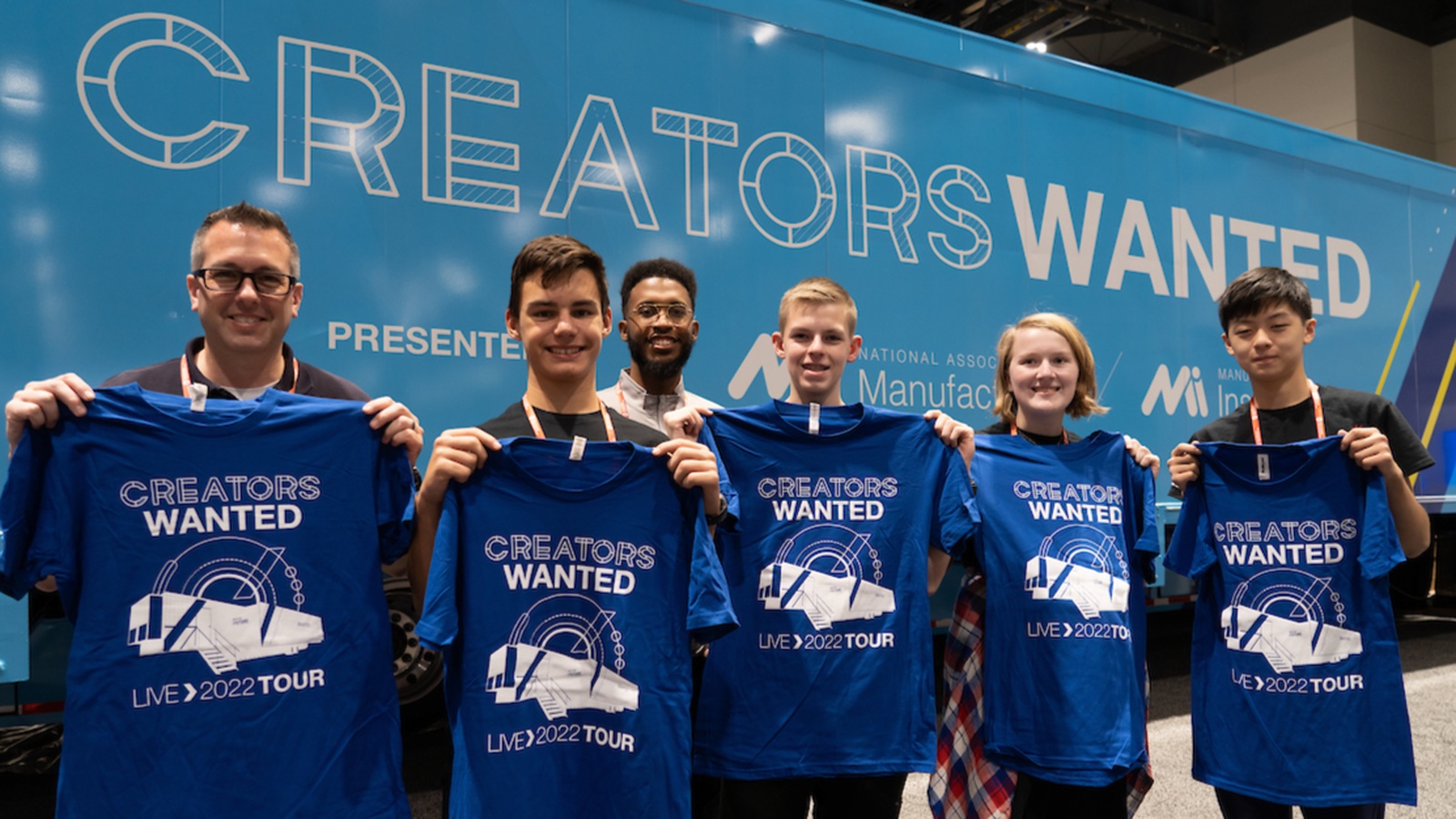
Automation isn’t just changing the manufacturing industry; it’s enabling human-centric progress in tackling the industry’s workforce crisis.
In action: As part of the Automation Fair in Chicago last week, more than 15,000 attendees got to see how manufacturers—and companies like Rockwell Automation—are providing solutions to the shortage, which could reach 2.1 million unfilled jobs by 2030, according to research from the Manufacturing Institute (the workforce development and education partner of the NAM) and Deloitte.
- Rockwell Automation brought the Creators Wanted Tour, a project of the NAM and the MI, to its Automation Fair, giving students, parents, educators and manufacturers the chance to see firsthand how digital transformation and new technologies are supporting careers and opportunities in modern manufacturing.
- The tour’s much-heralded immersive experience, along with displays and programs featuring experts from the MI and the Manufacturing Leadership Council (the digital transformation division of the NAM), gave attendees insight into the pathways and support available in the industry.
- FactoryFix, the official recruiting partner of Creators Wanted, was also on hand to showcase its manufacturing talent platform for job seekers—and manufacturers searching for a one-stop recruiting solution.
Changing perceptions: Creators Wanted aims to shrink the workforce gap by dispelling myths about automation and attracting the next generation to manufacturing jobs. It’s seeing impressive success, MI President Carolyn Lee said during a session at the event.
- “Today 40% of parents have a positive perception of manufacturing,” Lee said, citing a recent joint Deloitte–MI study. “And what we’re finding is that parents see these are durable careers with great possibility and opportunity, and they’re encouraging their children to consider them.”
Digital help: “Digital is going to help manufacturers deal with their workforce issues because it’s going to not only help change the perception of the industry, but create new jobs going forward, particularly in math-intensive areas like data analytics and artificial intelligence,” said MLC Vice President and Executive Director David Brousell.
- Brousell cited the MLC’s “Manufacturing in 2030 Project,” saying, “We have to think about digital transformation as human-centric digital transformation—because we’ve got to bring the technology and the people together simultaneously to have an effective transformation.”
Impressive results: Since it began just more than a year ago, the Creators Wanted Tour has seen more than 8,000 students pass through its immersive mobile experience, where more than 75% of attendees leave with a significantly improved view of manufacturing.
- More than 510,000 students and career mentors have also signed up to learn more about modern manufacturing careers.
- Creators Wanted has recruited successfully both mentors and mentees for the mentorship program of Women MAKE America, an MI initiative that aims to close the gender gap in manufacturing.
- The Automation Fair offered more than 150 interactive sessions on the newest industrial solutions and best practices, and more than 200 companies exhibited across 200,000 square feet at Chicago’s McCormick Place.
Media mentions: The fair and Creators Wanted’s presence drew a slew of media coverage, including from “Morning in America” with Adrienne Bankert, “The John Howell Show” on WLS-AM, Univision Chicago and suburban Chicago’s Daily Herald.
- In addition, the Daily Line published an op-ed on the future of manufacturing by NAM President and CEO Jay Timmons and Rockwell Automation Chairman and CEO and NAM Executive Committee member Blake Moret.
The last word: “As the world’s largest company dedicated to industrial automation and digital transformation, Rockwell is always looking toward the future of manufacturing,” Moret said. “Campaigns like Creators Wanted are critical to recruiting the best future talent to create a thriving workforce.”
Fostering a Diverse, Inclusive Culture at Smithfield
When it comes to diversity and inclusion, Smithfield Foods puts its commitments into action.
The world’s largest pork processor has committed to measurable increases—of 35% and 30%, respectively—in the hiring and promotion of women and individuals in underrepresented groups. And it’s pledged to do it all by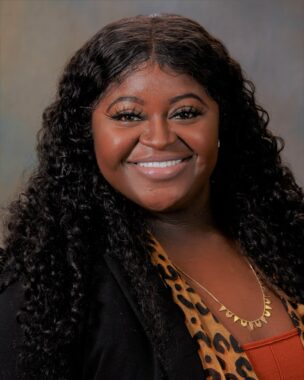 2030.
2030.
Bridging a gap: In September 2020, the Virginia-headquartered manufacturer launched its Operations Leadership Program, created to develop a strong pipeline of diverse talent to fill future management roles.
- “We lead with data. And our data shows there’s a gap in diverse representation between production and management,” said Smithfield Foods Manager of Diversity, Equity & Inclusion Jessica Jones. “The OLP provided us an opportunity to track data on team members, their promotion opportunities, how they’re elevating within the company with a commitment to monitor year-over-year data three years after program completion for each cohort.”
- In just over two years, the program, which garners participants through applications, has seen 132 graduates and nearly 50 promotions.
Providing encouragement: Ironically, many of the same employees the OLP was designed to help were initially reluctant to apply, Jones said.
- “We did focus groups and what we realized is, those who weren’t applying were women and people of color,” she said. “They shared, ‘I don’t think it’s for me,’ and when we heard that, we realized it meant, ‘I never saw myself going higher than my current opportunity.’”
- Smithfield’s leadership began to strategically target their communications to specifically focus on these employees and encourage them to consider the program. “That’s when we started to see the uptick in more women and people of color applying,” Jones said.
Other D&I initiatives: To reach its lofty 2030 diversity and inclusion goals, Smithfield has deployed other programs, too, including the following:
- Smithfield’s Farmer Diversity Program, which aims to increase the number of Black and minority hog farmers in the company’s supply chain;
- A Future Leaders Program that gives scholarships and career opportunities to rising high school seniors through summer internships to increase diversity in leadership;
- An expansion of the Smithfield Foods Scholarship Program for eligible dependents of Smithfield employees so that it includes historically Black colleges and universities; and,
- A supply-chain initiative in which the company has committed to increasing its production-facility spend with minority-owned businesses by 14% by 2025.
The company has also signed NAM’s Pledge for Action, in which manufacturers commit to 50,000 specific actions to increase diversity and inclusion.
The last word: “I have seen this company change and evolve in such a wonderful way,” Jones said. “We now have opportunities to elevate and expose our employee base to Smithfield’s leadership—making sure they have a touch point, a way to connect. Our leadership wants to know how they are doing, prevalent challenges and support needed. The change has been so encouraging.”
MI President Carolyn Lee Talks Workforce Development
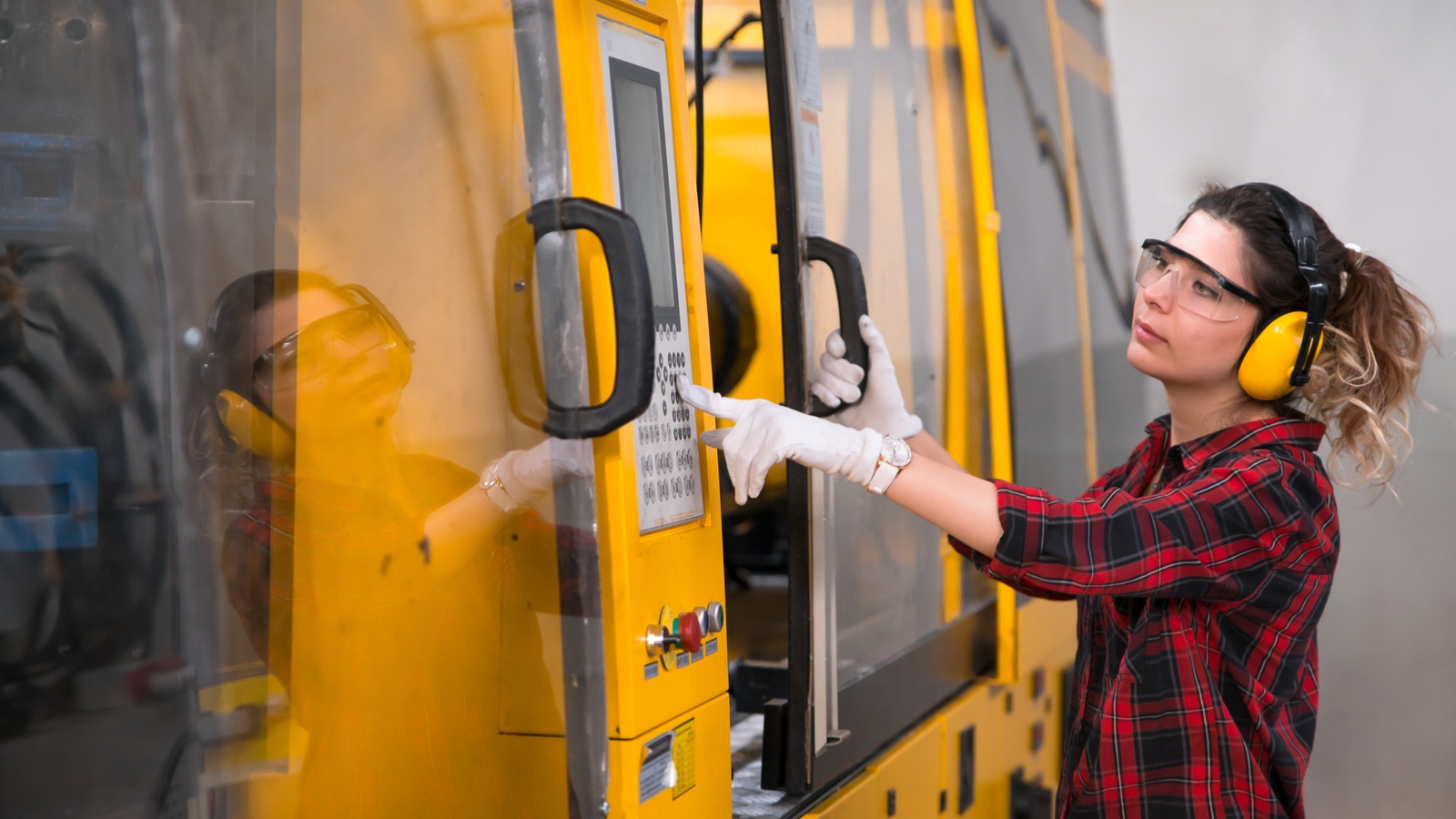
Manufacturers continue to face an alarming workforce shortage—which could result in 2.1 million unfilled jobs by 2030, according to a study by The Manufacturing Institute and Deloitte.
The MI—the workforce development and education partner of the NAM—is working hard to fill that gap. MI President Carolyn Lee spoke at the Made in Connecticut: 2022 Manufacturing Summit last week about how manufacturers are taking on this critical issue and what lies ahead.
The challenge: “One of the biggest long-term issues our industry is confronting is the perception problem,” said Lee. “Many Americans—usually parents—cling to the belief that the manufacturing industry is not a place where people can find satisfying, well-paying lifelong careers. … Our industry needs to overcome this perception and grow the supply of young workers.”
Making progress: “That brings me back to good news: perceptions are changing,” said Lee. “Thanks to movements like MFG Day, and campaigns like the National Association of Manufacturers and The Manufacturing Institute’s ‘Creators Wanted’ campaign, which is touring the country right now, we are moving the needle.”
- “We’re showcasing modern manufacturing as we know it to be: exciting, rewarding, clean and high-tech,” said Lee. “Thanks to these efforts, the positive perception of manufacturing among adults in the past few years has grown from 27% to 40%.”
Promoting programs: Lee spoke about a range of programs offered by the MI that are designed to help build an expansive and inclusive manufacturing workforce. These programs include:
- Women MAKE America, formerly known as the STEP Ahead program, which supports women in manufacturing;
- Heroes MAKE America, which eases the transition to civilian careers for veterans and other members of the military community; and
- FAME, which was originally founded by Toyota before transitioning over to the MI in 2019, and which offers an “earn and learn” apprenticeship experience.
Pushing policy: Lee noted the importance of ensuring that government policy is aligned with the needs and realities of the manufacturing industry. She also highlighted elements of “Competing to Win”—the NAM’s policy blueprint for bolstering manufacturers’ competitiveness. Proposed policies include:
- Reorienting the education system and its funding around a skills and employer-involved model;
- Updating federal tax policy to encourage and reward companies that invest in upskilling their employees; and
- More federal investments in apprenticeship models.
The last word: “Our industry’s strength and competitiveness will be determined by the strength of our workforce,” said Lee. “After all, they are the creators who pioneer and produce lifechanging electronics or lifesaving medicines. They are innovating and building the machines that transform human mobility, improve quality of life or bolster our national defense.”
Learn more: Find out more about the MI’s vital work here.
MI Summit Advances Workforce Solutions
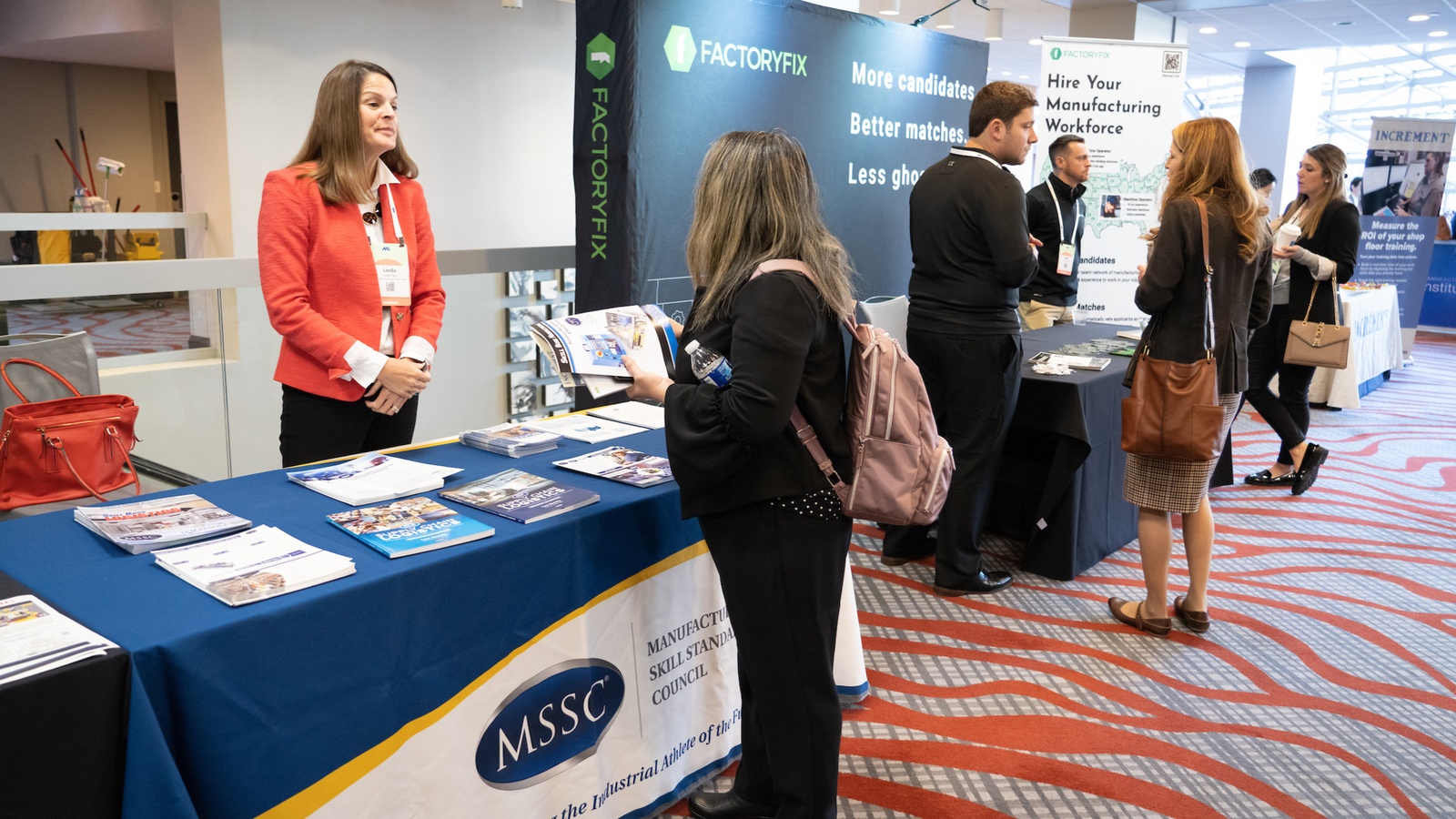
Last year, The Manufacturing Institute—the workforce development and education partner of the NAM—came to a realization: There were manufacturing conferences and there were workforce conferences, but neither addressed manufacturing-workforce challenges from a broad, national perspective. The MI wanted to change that.
And it did, just this month—with the inaugural, now-annual, MI Workforce Summit.
What it is: The summit, held this month in Cincinnati, Ohio, is a first-of-its-kind, multiday event that brought manufacturers, educators, community partners, association leaders and more together to network, attend workshops and hear talks from manufacturing and workforce leaders. All of them had the same goal: to build the manufacturing workforce of today and tomorrow to ensure the industry’s competitiveness.
- Made possible by sponsors including the Arconic Foundation, WestRock, FactoryFix, the Manufacturing Skill Standards Council and EY, and supported by the Ohio Manufacturers’ Association, the summit drew more than 300 participants.
- Half the attendees were manufacturing employers and half were from the MI’s leading partners.
- “Forging partnerships isn’t a theme, it’s an action item,” said Arconic Foundation President and Treasurer Ryan Kish. “Come up with concrete actions for your organization on how you’re going to go into the community and forge partnerships to tackle the manufacturing workforce challenge.”
What happened: The summit, with its theme of forging partnerships, resulted in the creation of more than 920 new connections among workforce stakeholders. It focused on three “areas of importance”: attracting, training and retaining quality employees and how partnerships enable success across all three. Specific events at the summit included:
- A plenary fire-side session on how partnerships helped Toyota and the entire manufacturing sector grow in northern Alabama;
- Breakout sessions focused on a range of key issues, including how parents and teachers help manufacturers attract talent, how the workforce can prepare for automation and how economic developers are now assisting in workforce development;
- Newly released research from the MI on adaptive skills and future skills needs;
- A plenary on the impact of culture on employee retention;
- Interactive Q&As on recruiting, training and retaining employees; and
- A session on how corporate and foundation grants can improve the manufacturing workforce ecosystem.
“Hidden” talent: A frequently untapped pool of potential workers—individuals with previous involvement in the criminal justice system—was another topic of discussion at the summit.
- One in four adults in the U.S. has a criminal record, according to the National Employment Law Project. Many companies have had success in hiring people with criminal records, which has led more manufacturers to begin recruiting “second chance” hires.
- A leader in these hiring practices is JBM Packaging, whose director of human capital and culture, Valerie Plis, spoke at the summit.
Hiring veterans: Military veterans are another group of promising potential hires, as speakers advised the attendees.
- More than 200,000 men and women transition out of the U.S. military and into civilian life every year, according to the Labor Department.
- The MI’s Heroes MAKE America program seeks to attract many of them to the manufacturing industry, by building connections between the military and veteran communities and companies seeking top talent.
Growing talent: The summit dove into another successful workforce solution model: the Federation for Advanced Manufacturing Education (FAME), created by Toyota in 2010 and transitioned to the MI in 2019.
- FAME, which recently wrapped up its own annual national conference, combines strong technical training and professional skills development with hands-on manufacturing work experience to create global best-in-class entry-level technicians. In just three years, it has spread across the U.S. and now has more than 400 manufacturer partners.
- From 2021 to 2022, the program saw an 18% increase in the number of participants, according to MI President Carolyn Lee.
The last word: In her remarks, Lee encapsulated the central idea behind the new summit: “When we pioneer solutions together, we’re stronger than when we work alone.”